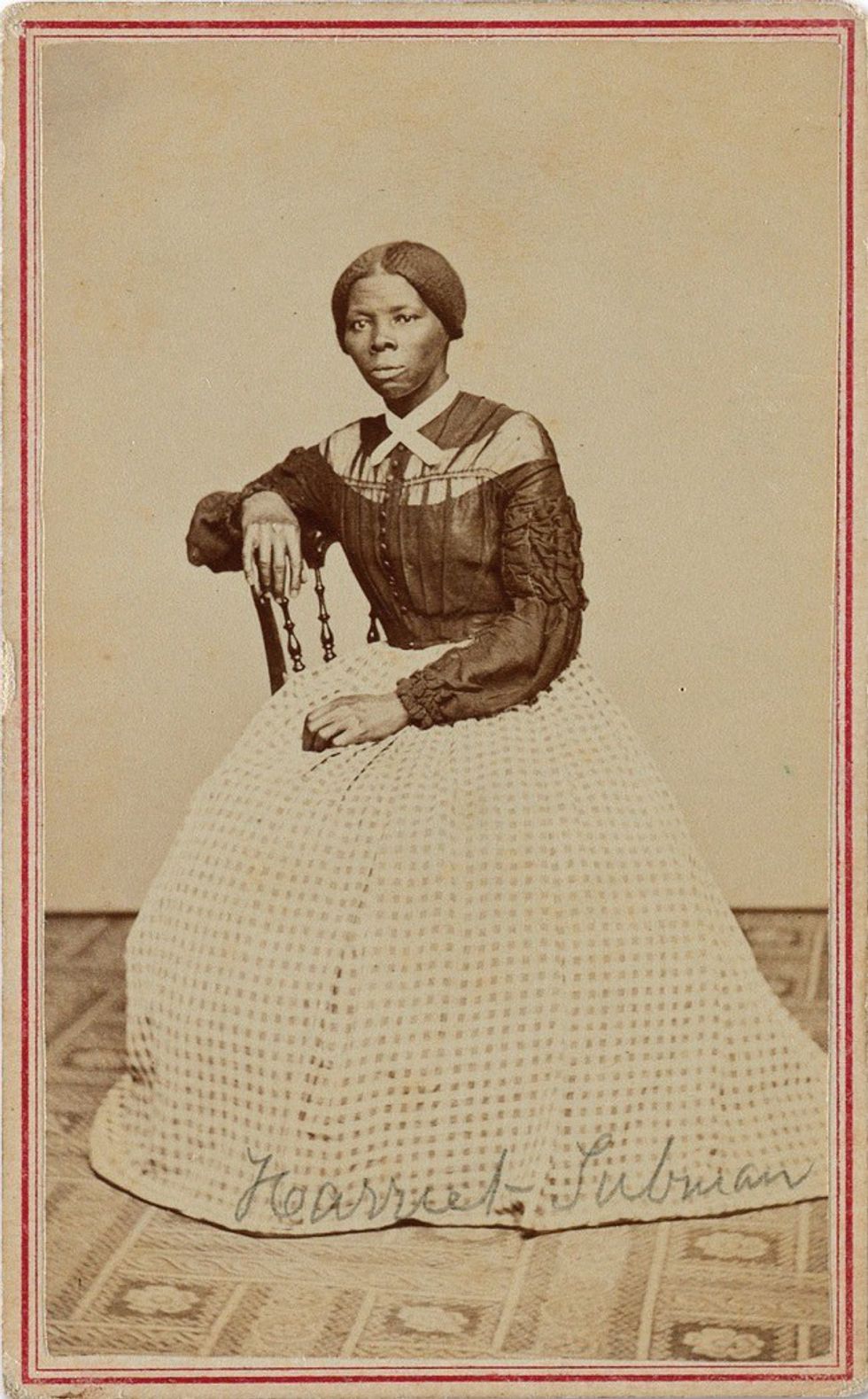Unwilling to die under the oppression of slavery, Henry "Box" Brown, Frederick Douglass, Harriet Tubman, and thousands of others escaped slavery from the South, to gain freedom in the North before the war between the states.
The image below is the approximate path followed by a brief description of Brown, Douglass, and Tubman's escape path over the Mason-Dixon Line.
Satellite land cover imagery of colored line layers representing the Mason-Dixon Line with approximate slave escape routes for Henry "Box" Brown, Frederick Douglass, and Harriet Tubman
Henry "Box" Brown's escape route is noted in yellow.
Henry "Box" Brown was born and raised a slave on a plantation in Louisa County, Virginia in 1815. When Brown was 32 years old, he watched as his pregnant wife and three children were to be sold to a plantation in North Carolina in 1848. Helpless to save them, he put together a creative plan to escape his bondage. To get out of work for the day, he burned his hand down to the bone with sulfuric acid, and with the help of a choir-member friend, and a white sympathizer, Brown was shipped in 1849, in a three feet long by two feet eight inches deep by two feet wide box. With a hole cut into it, the shipment contained, in addition to Brown, a coarse cloth, one container of water, and a few biscuits. In the span of 27 hours, and the distance of over 200 miles, the box traveled in wagons, ferries, steamboats, and railroads to finally arrive in Philadelphia. Upon springing from the box, Brown said, "How do you do, Gentlemen?", recited a psalm, and christened Henry "Box" Brown.
Frederick Douglass's escape route is noted in blue.
Born in Talbot County, Maryland, in 1818, Douglass gained his freedom from slavery after his third escape attempt. Disguised as a sailor, papers borrowed from an acquaintance, and funds from his soon-to-be wife, Douglass boarded a train and traveled roughly 180 miles through his home state to Havre de Grace. After the train arrived, passengers were instructed to exit the train and board a ferry-boat to cross the Susquehanna River. Although only 20 miles from the free state of Pennsylvania, it was easier to travel through Delaware, and Douglass did so by train to the port city of Wilmington. From there he traveled by steamboat, due to the rail line not being completed, along the Delaware to Philadelphia. Although a freeman, Douglass continued over night by train to the safe house of abolitionist David Ruggles in New York City. The entirety of his epic journey took 24 hours.
Harriet Tubman's escape route is noted in red.
Born into slavery in Maryland, in 1820, Harriet Tubman made her great escape in 1849 and was never, physically, restrained by the shackles of slavery ever again. Tubman traveled during the night, to stay clear of slave catchers, and followed the North Star to various safe houses along the Underground Railroad; a journey roughly five days to three weeks long and nearly 90 miles in length. Harriet Tubman was a free woman when she arrived in the "City of Brotherly Love," Philadelphia.
Harriet Tubman, c. 1860
Not only known for their daring escape, Brown, Douglass, and Tubman became heroic symbols. Henry "Box" Brown became an Abolitionist, Magician, and Performer before his passing in 1897. Frederick Douglass became an Abolitionist, Suffragist, Author, Editor, and Diplomat before his death in 1895. Harriet Tubman became a Civil War Nurse, Suffragist, and Civil Rights activist before her death of pneumonia at the age of around 91 in 1913.




















